Historical images
| What happened this month | Image | Title | Description | Posted |
|---|---|---|---|---|
| ...59 years ago | 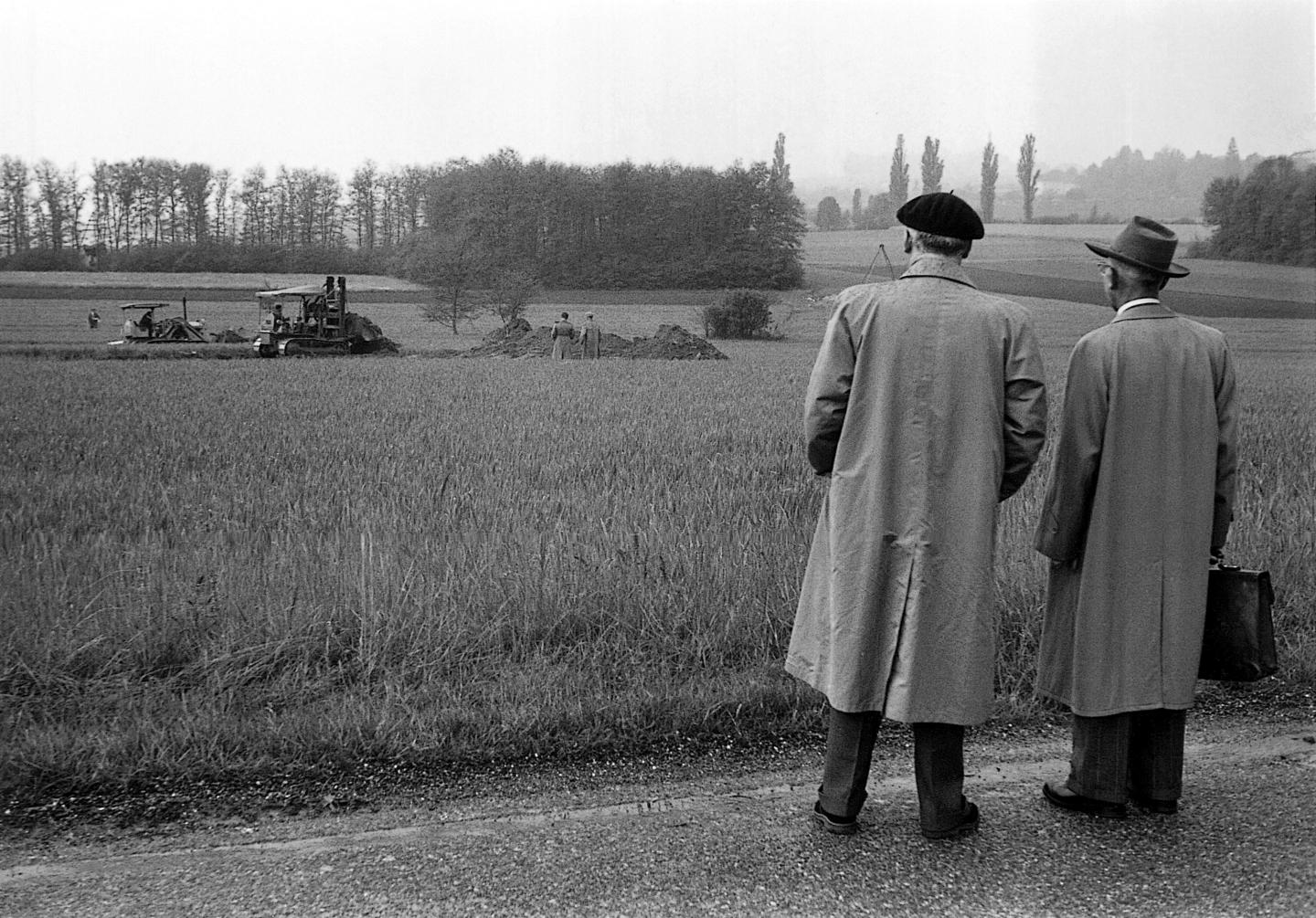
|
May 1954 – Construction of CERN begins | A historic moment passed almost unnoticed on 17 May 1954, as the first excavation work started in the Meyrin countryside and construction of CERN began. Future events of this kind were celebrated with speeches, press coverage and parties, but this was a quiet and purely unofficial ceremony. Geneva had been chosen as the site for the proposed laboratory in October 1952 and approved by a referendum in the canton of Geneva in June 1953, but CERN’s status was provisional until completion of the ratification process at the end of September 1954. Nonetheless, CERN staff were already hard at work, and those based locally (at the Institut de Physique and Villa Cointrin) assembled in Meyrin along with representatives of the Genevan authorities and the chairman of the provisional CERN Council, Robert Valeur, to watch work begin on their new home. |
|
| ...81 years ago | 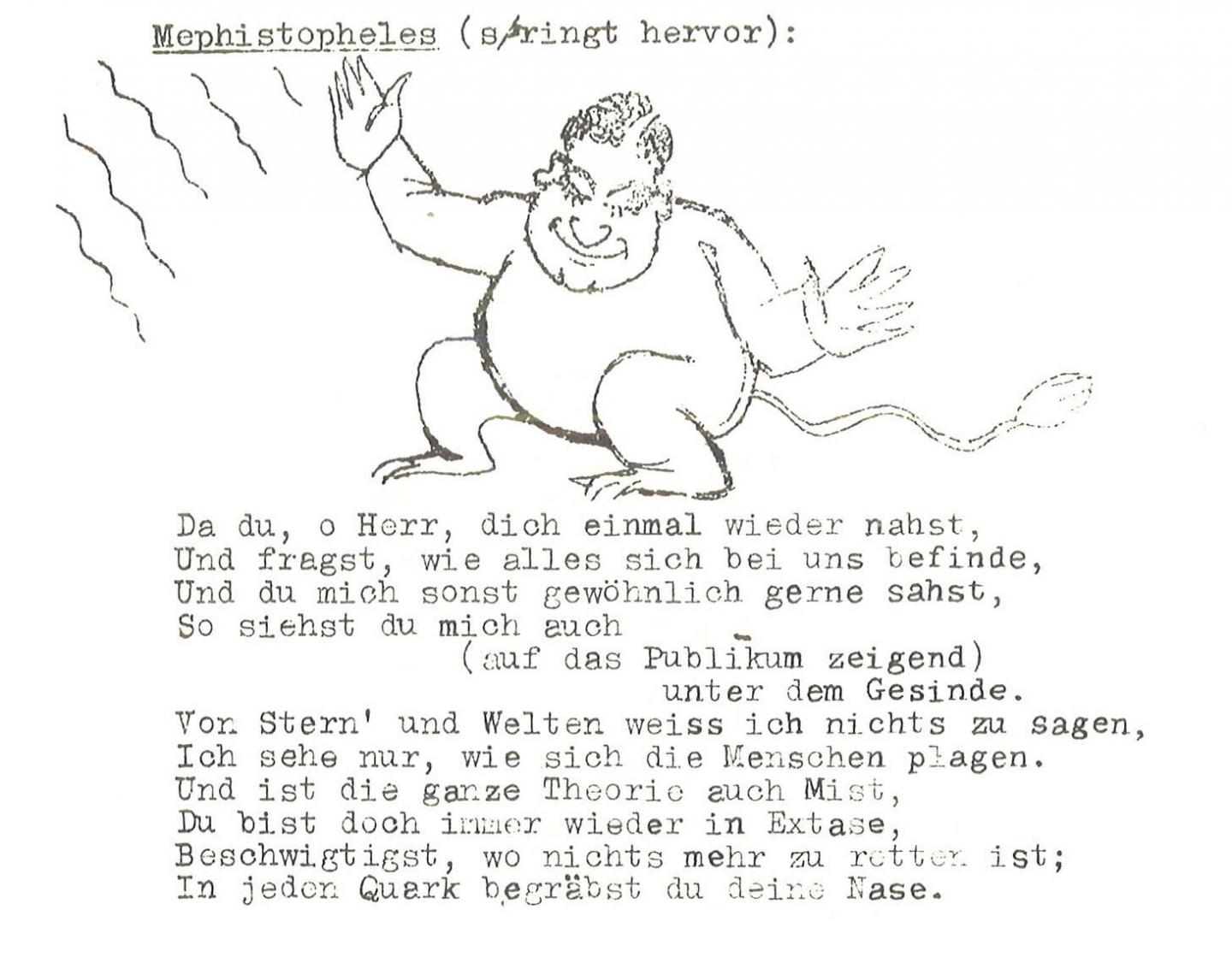
|
April 1932 – The Copenhagen Faustparodie | Among the scientific documents in CERN’s Wolfgang Pauli Archive is a rather unusual item – a copy of the script parodying Goethe’s Faust performed at the Niels Bohr Institute conference, 3-13 April 1932. Written mostly by Max Delbrück, and decorated with caricatures of the protagonists, the skit features Pauli (Mephistopheles) trying to sell the idea of the neutrino (Gretchen) to a sceptical Paul Ehrenfest (Faust)! Pauli had postulated the existence of this weightless particle in his famous letter to the ‘Dear radioactive ladies and gentlemen’ at the Tübingen conference in December 1930, but he had to wait until 1956 for experimental confirmation by Reines and Cowan, so in 1932 it was still the subject of debate. Pauli’s reputation for sharp wit made him ideal for his satanic rôle, but in his absence the part was played by Léon Rosenfeld. The rôle of God was assigned to Bohr. The script (in German), can be seen here. An English translation is given in George Gamow’s Thirty Years that Shook Physics. |
|
| ...24 years ago | 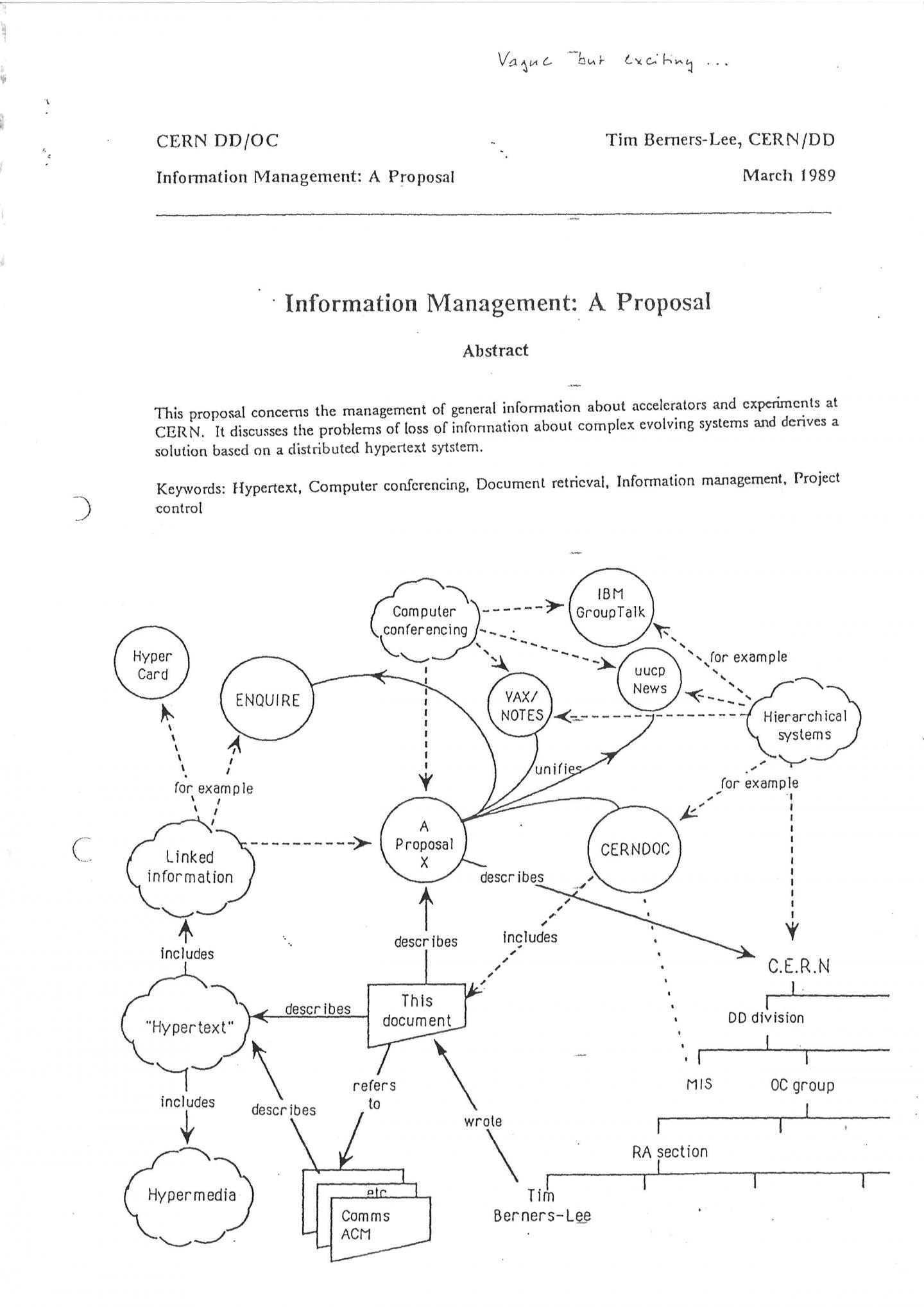
|
March 1989 – First outline of the World Wide Web | Tim Berners-Lee made a first proposal for information management at CERN in March 1989. A later version was written in 1990, but this early document is particularly interesting because it includes annotations by his boss, Mike Sendall, whose general comment was ‘Vague but exciting…’! The project eventually grew to become the World Wide Web. In this document Berners-Lee outlined the problems of losing information at CERN, the advantages of linked information and hypertext and the practical requirements of his idea. He proposed ‘a universal linked information system, in which generality and portability are more important than fancy graphics techniques and complex extra facilities. The aim of the project would be to allow a place to be found for putting any information or reference which one felt was important, and a way of finding it afterwards.’ With the help of Robert Cailliau and others he was able to make the dream a reality. |
|
| ...61 years ago | 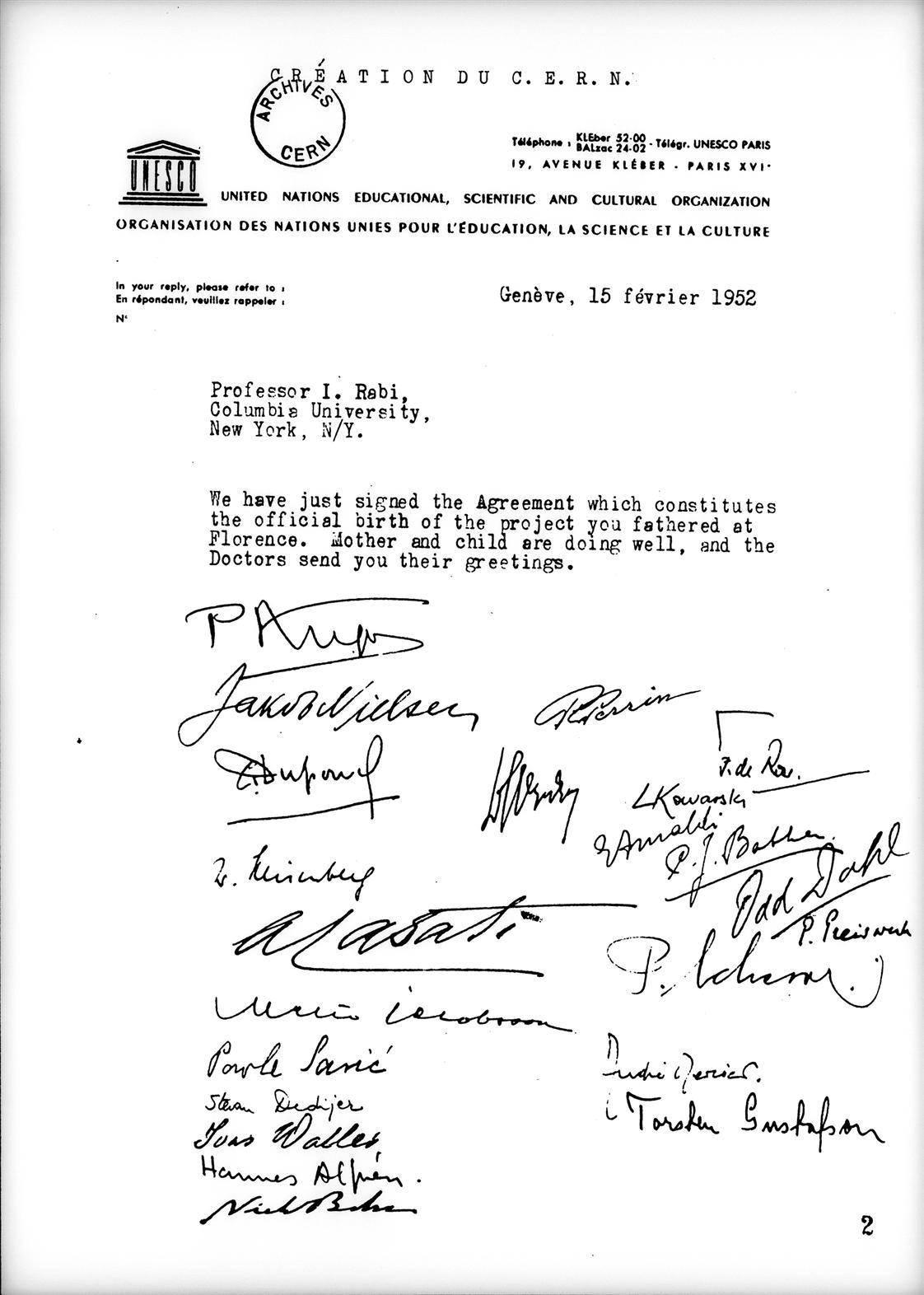
|
February 1952 – CERN is born, mother and child are doing well | “We have just signed the Agreement which constitutes the official birth of the project you fathered at Florence. Mother and child are doing well, and the doctors send you their greetings.” This was the message sent to Isidor Rabi on 15 Feb 1952 by the signatories of an agreement establishing the provisional European Council for Nuclear Research. Scientists and politicians had been pressing for the creation of a European laboratory to pool resources depleted after World War Two, and Nobel laureate Rabi added his support at the fifth UNESCO General Conference (Florence, June 1950), where he tabled a resolution to “assist and encourage the formation of regional research centres and laboratories in order to increase and make more fruitful the international collaboration of scientists…” The first resolution concerning the establishment of a European Council for Nuclear Research was adopted at an intergovernmental meeting of UNESCO in Paris in December 1951. The provisional Council, set up in 1952, was dissolved when the European Organization for Nuclear Research officially came into being in 1954, though the acronym CERN (Conseil Européen pour la Recherche Nucléaire) was retained. |
|
| ...42 years ago | |
January 1971 – the world’s first proton-proton collider | The scene is the control room of the Intersecting Storage Rings (ISR) on 27 January 1971. Kjell Johnsen, leader of the ISR construction team, has just announced successful recording of the first ever interactions from colliding proton beams. It was a triumphant moment, not least because the ISR had been an ambitious and highly controversial project, with several years of heated debate preceding its final unanimous approval by the CERN council in June 1965. The interconnected rings, 300 metres in diameter and fed from the Proton Synchrotron (PS), ran from March 1971 until December 1983. At the official inauguration on 16 October 1871, Werner Heisenberg handed the President of the CERN council, Edoardo Amaldi, a golden key that controlled the transfer of protons from the PS to the ISR, symbolizing their hopes that the new machine would be the key to a thorough understanding of the world of elementary particle physics. He said such a symbolic key should first be in the hands of the experimentalists. At the closure ceremony on 26 June 1984, the key was formally handed back to the theorists, in the person of Viktor Weisskopf. |
|
| ...48 years ago | |
December 1964 – Fun and games at the traditional CERN Christmas party | The tradition of holding a Christmas party for CERN children began in the first year of CERN’s existence and still continues. In the early 1960s it was decided to hold two parties, so there would be room to invite non-CERN children from the neighbouring districts as well. In 1964 (on 6 December for those with names from A to K, and 13 December for the rest) children aged between 4 and 12 years old enjoyed a film, a conjurer and musical clowns, followed by refreshments. Transport was arranged for those requiring it, and parents were informed that although they would not be admitted to the party itself, arrangement had been made to keep the bar open for those wishing to remain during the festivities - Happy Christmas! |
|
| ... 67 years ago | 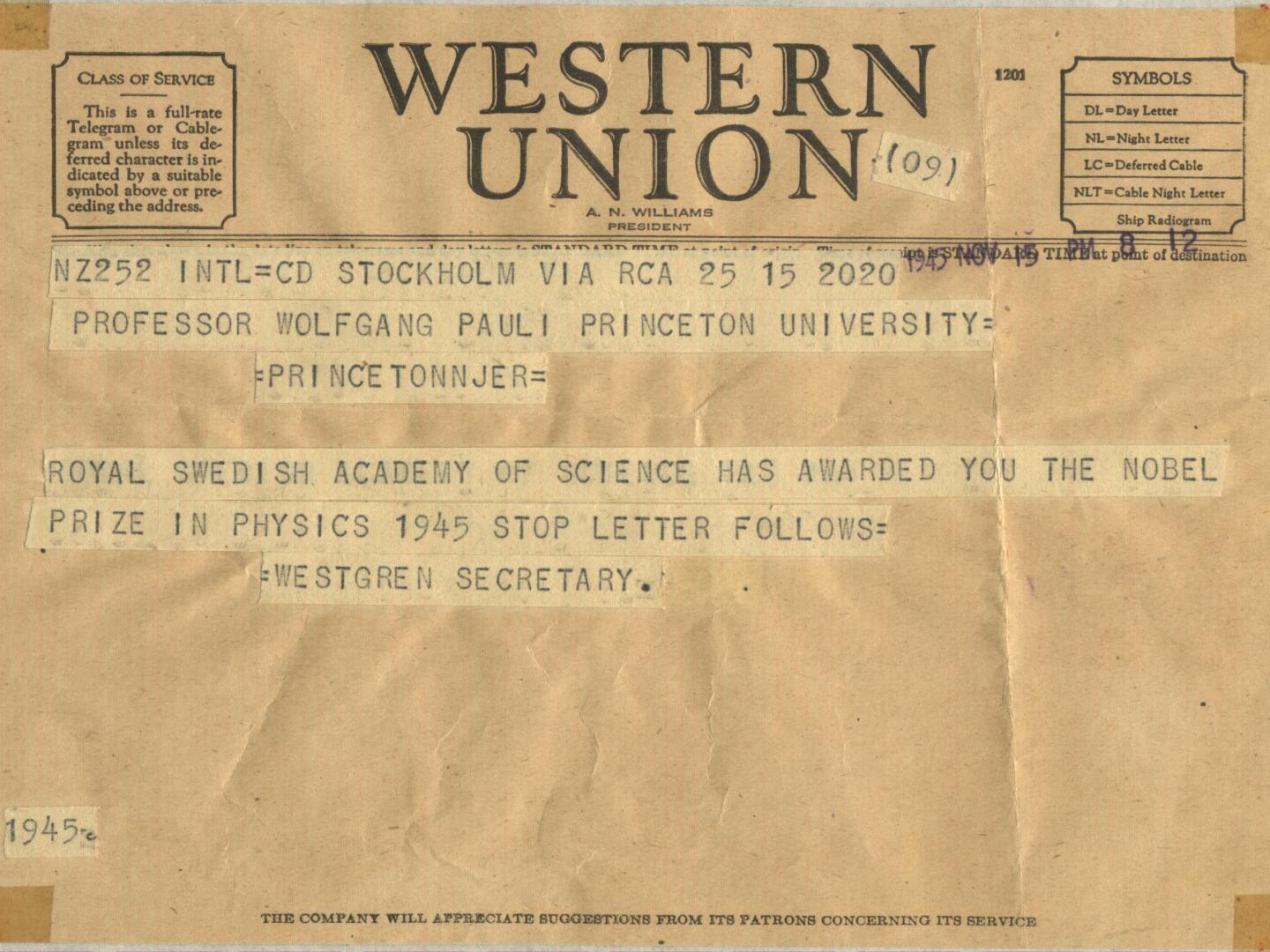
|
November 1945 - Wolfgang Pauli learns that he has been awarded the Nobel Prize | Wolfgang Pauli was awarded the 1945 Nobel Prize for Physics for his Exclusion Principle. When he received the telegram from Arne Westgren (15 November 1945) Pauli was working at the Institute for Advanced Study in Princeton, having left Europe for the USA during World War 2. Pauli was the first resident member of the Institute to receive a Nobel Prize; his Princeton colleagues greeted it with great enthusiasm and the Director organised a large official ceremony. Unexpectedly, after speeches by various distinguished guests, Albert Einstein rose to give an impromptu address, referring to Pauli as his intellectual successor. Pauli was deeply touched by this speech, recalling it in a letter to Max Born 10 years later (24 April 1955), and regretting that, since it had been entirely spontaneous, no record of it remained. |
|
| ... 59 years ago | |
October 1953 – Settling into Geneva | Even before the official creation of CERN in 1954, staff began to settle into temporary offices around Geneva. On 5 October 1953 part of the PS (Proton Synchrotron) Group, including Frank Goward, John Adams, Mervyn Hine, John and Hildred Blewett, Kjell Johnsen and Edouard Regenstreif, arrived to start work in offices that had been made available at the University of Geneva's Institute of Physics. In the same month plans were made to convert the Villa de Cointrin (see photo), which later became the first headquarters for the CERN Directorate, Administration and Finance Groups. The building was currently empty and in need of repair, and was being offered for an annual rent of around 3,000 CHF. |
|
| ... 29 years ago | 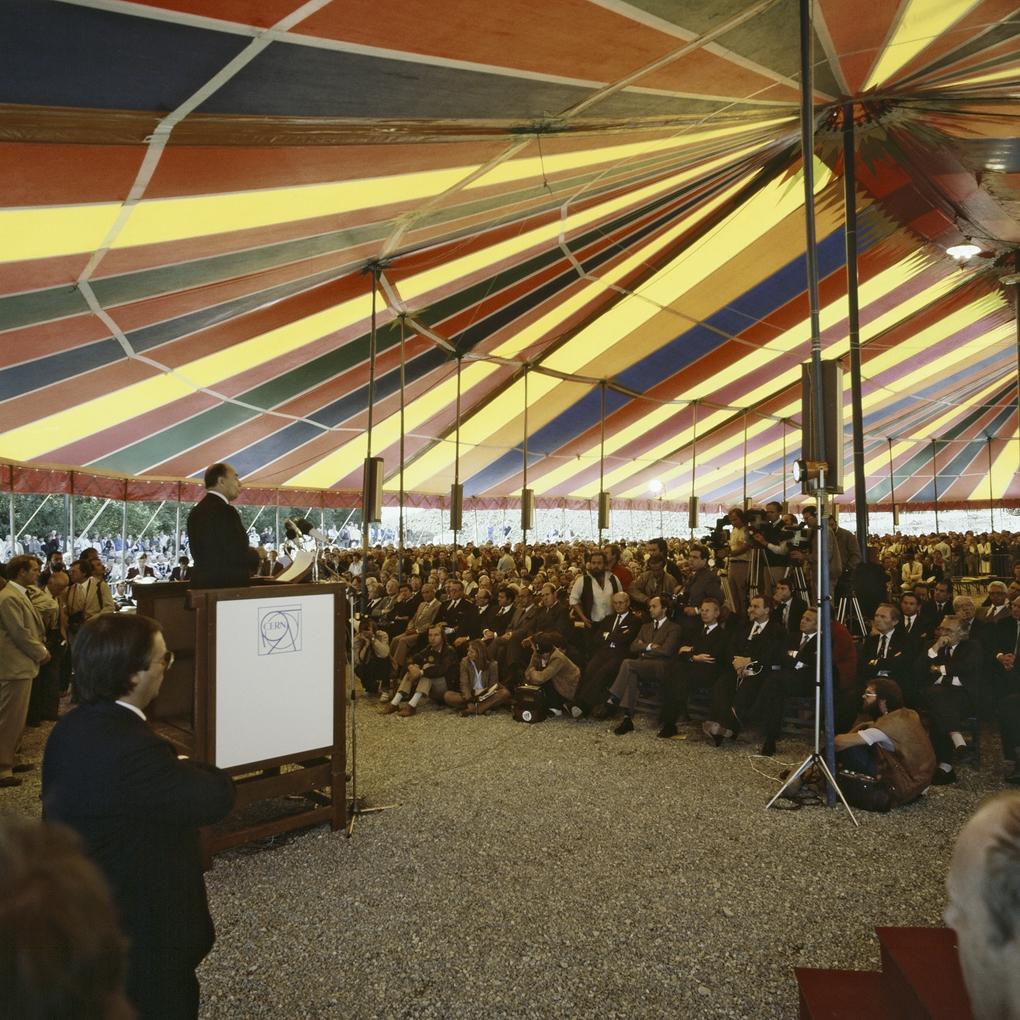
|
September 1983 - Speeches from the Swiss and French presidents at the LEP ground-breaking ceremony | CERN staff and their families were joined by numerous distinguished guests for the official ceremony that launched civil engineering work for the Large Electron-Positron (LEP) collider project on 13 September 1983. Speeches by Herwig Schopper (CERN’s Director-General) and Presidents François Mitterrand and Pierre Aubert were followed by an inaugural ceremony then music and celebrations on the lawn. With a circumference of 27 km, LEP was the largest electron-positron accelerator ever built, and excavation of the LEP tunnel was Europe's largest civil-engineering project prior to the Channel Tunnel. LEP operated for 11 years from July 1989 until its closure on 2 November 2000 to make way for construction of the Large Hadron Collider (LHC) in the same tunnel. |
|
| ... 55 years ago | |
August 1957 - The first circulating beam in the Synchrocyclotron | A log book entry written by Wolfgang Gentner, the head of SC Division, and signed by various colleagues, tells us that ‘a short celebration’ was held on the 1st of August 1957 following the successful appearance of the first circulating beam. The 600 MeV Synchrocyclotron (SC) was CERN’s first accelerator and provided beams for its earliest particle and nuclear physics experiments. It was a remarkably long-lived machine, even when superseded by the larger Proton Synchrotron, and operated for 33 years before being decommissioned in December 1990. Work is currently underway to give the SC a new lease of life as an exhibition area and visitor attraction. |
